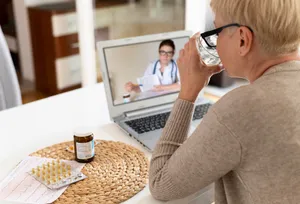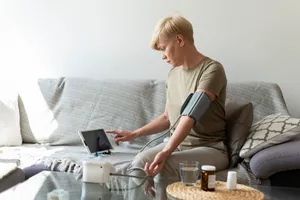A video call might feel intimidating if you're new to online doctor appointments or are used to seeing your doctor in person, a video call might feel intimidating. But don't worry! In this article, we'll give you some tips on how to prepare for your virtual appointment so that you can get the most out of it.
Getting Familiar with Telehealth
Telehealth Services:
Telehealth offers a variety of healthcare services that can be provided remotely. These services may include consultations, check-ups, mental health services, and follow-up appointments.
Benefits:
There are several benefits to using telehealth services. These include reduced wait times, the convenience of receiving care from home, reduced transportation costs, and fewer disruptions to your daily responsibilities. Additionally, telehealth may be beneficial for individuals who live in rural areas, have mobility limitations, or have difficulty leaving their homes.
What Kind Of Equipment Do You Need For A Video Call Appointment?
For many virtual appointments, you'll need a device such as a smartphone, tablet, laptop, or computer with a webcam and microphone to see and talk to your doctor. If you prefer to be seen as well, ensure your device has a working webcam and microphone.
Our pro tip is to test your webcam and microphone before your virtual appointment to avoid technical issues. You don't want to spend your appointment troubleshooting instead of focusing on your health.
To maintain privacy, use headphones or earbuds during your appointment.
Ensure that your device is fully charged on the day of your appointment. It's best to keep your device plugged in during the appointment to prevent any disruptions.
What Steps Should I Take To Get Ready For An Online Video Call With A Doctor
Tips for a Smooth Video Visit with Your Doctor:
- Inform your healthcare provider If you require any special assistance. Do not hesitate to inform your healthcare provider about such as a screen reader, closed captioning, translator/interpreter, or any other support. Make sure to communicate your needs so that they can provide the necessary accommodations.
- Check your email. Make sure to check your email for instructions and review any communication, such as emails, texts, or other messages from your healthcare provider's office. These messages may contain important information about your appointment and details on accessing and using any related technology.
- Test your device beforehand. To avoid technical issues during your appointment, check your device's video and audio before your scheduled visit.
- Reduce background noise. Find a quiet, private area or a separate room to minimize background noise.
- Choose a well-lit spot. A well-lit room will help your healthcare provider see you better during the video visit.
- Keep your camera steady. Place your phone or tablet on a table or desk to keep the camera steady.
- Put yourself at the center of the screen and ensure that the camera is at eye level. Remember that what you see on your screen is what the provider will see, so it's essential to be close to the screen and look directly into the camera.
- Close other applications on your device. Closing other apps will help your internet connection and reduce distractions.
- Wear loose clothing. If you need to show a particular area of your body, wear clothing that allows easy movement so that your healthcare provider can see clearly.
- Get comfortable. Prop up your phone or tablet and find a comfortable spot to sit so that you can focus on your appointment. Holding your device for the entire meeting can be tiring.
Tips For A Successful Virtual Visit (Video Or Audio)
- Choose a private spot for your virtual appointment to discuss your healthcare issues privately.
- Before your telehealth visit, it's important to prepare by writing down essential information such as your current medications and their doses (or collecting the actual bottles), any symptoms, questions, or concerns you wish to discuss, as well as your temperature or weight if your provider requests it.
- It's also a good idea to keep a pen and paper close by during your appointment to take notes.
- To stay focused during your telehealth appointment, avoid eating or drinking, and make sure not to participate in the visit while driving or running.
- Be patient while waiting for your visit, as providers sometimes run behind schedule, just like regular in-person office visits.
How Can You Feel Confident and in Control During Your Telehealth Visit?
Feeling empowered during a telehealth visit is vital for your overall health and well-being. Here are some steps you can take to make sure you are comfortable and in control:
- Educate yourself: If you need clarification on how telehealth works, feel free to ask your provider for information. Understanding what to expect can help ease any anxiety you may be feeling.
- Ask questions: Don't be afraid to ask your provider to explain things in more detail. It's essential that you fully understand any information they provide.
- Get a summary: Ask your provider for a written summary of your visit, including any answers to questions you may have had. This can be useful for future reference.
- Decide what to share: While sharing more information can help your provider better treat you, it's okay to let them know if you're uncomfortable answering specific questions.
- Know your rights: Understanding your rights and how your personal information is protected through telehealth is essential. Don't hesitate to ask your provider about privacy concerns or anything else on your mind.
Conclusion
Attending an online video call with a doctor can be a convenient and effective way to receive medical care. By following the tips and recommendations for a successful visit, you can empower yourself to maximize your telehealth experience and receive the care you need.


